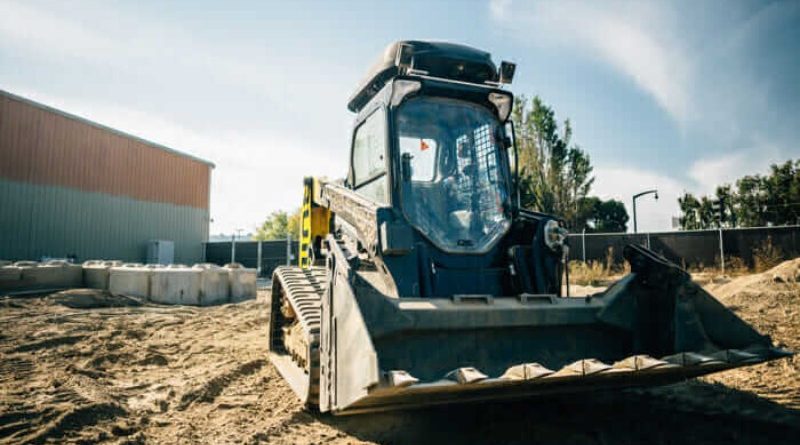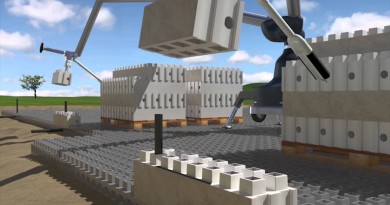7 Major Construction Technology Innovations to Watch in 2018
2017 was a big year for technology innovation in the construction industry, and that pace is unlikely to slow in 2018. This is good news for companies that embrace technology to improve cost, safety, efficiency, and quality of construction.
If you plan to be among the leaders, here are 7 construction technology innovations to watch in 2018.
1. Virtual Reality

Virtual reality has finally made its way out of the gaming industry fully into the (pun intended) real world. Winter Construction used 4D virtual reality models to fully immerse owners and other stakeholders in the environments of planned construction during planning and design stages for major projects including an airport hotel and a zoo parking and entertainment complex.
In both cases, walking stakeholders through a fully interactive immersive experience prior to finalizing plans allowed them to win buy-in and produce plans that fully met expectations. It also allowed them to work around unique conditions including the schedule needs of zoo animals and views of aircraft take-offs and landings.
While virtual reality has previously been the domain only of the most cutting-edge organizations, it is becoming increasingly mainstream, and increasingly in demand from owners. 4D environments allow construction companies to plan every aspect of the construction project, improving everything from safety to efficiency, and delivering a more consistent and quality final product.
2. Augmented Reality

Augmented reality provides ability to literally walk through designs via tech like DAQRI Smart Glasses
While virtual reality allows users to “walk” through 3D and 4D model environments without actually moving their feet, augmented reality allows users to walk through real 3D environments, with their feet, while gathering and/or viewing additional real-time information about that environment.
For instance, a new iOS app called MeasureKit allows users to point their phone or iPad at an object or building component, and interact with that component through the screen in three useful ways: Measure, level, and place objects. Here’s a video of how MeasureKit works:
We predict that many new augmented reality applications will arrive in 2018, and that some of the existing applications will become mainstream, such as the ability that BIM 360 Glue provides for subcontractors to point a device at a component and get information from the 3D models laid against the image that is framed in the device.
3. Wearable Technology

The construction site has never been safer than it is today, and we think it’s only going to get safer with the introduction and mainstreaming of wearable technology. Companies like Triax offer wearables that track where workers are on the job site, alert them in real time of potential hazards, and identify when someone has tripped, slipped, or fallen, so help can be sent right away.
We think there will be more and more products like Triax available, and that companies who take advantage of them will become more and more in demand, especially as the industry begins to develop benchmarks for safety that become part of the bid process.
4. Machine Learning

While we’re on the topic of safety, take a look at some of the past year’s innovations in machine learning, and their implications for the new year. Smartvid.io, for instance, aggregates visual data from the job site and intelligently analyzes it for a variety of purposes including safety, quality, progress tracking, and marketing.
Smartvid.io constantly analyzes photos, videos, and other visual data coming from the job site, and looks for safety violations (failure to use PPEs, for instance), as well as tagging items by room and associating them with plan data. This allows folks in the job trailer or the office to quickly find visual information about the site without having to sort through masses of data. Additionally, it makes it easy to identify visual data to use for marketing purposes.
We think technologies like Smartvid.io are going to transform the way companies do business in 2018, by making existing data more accessible and easier to use to improve everything from quality and timelines to safety and marketing.
5. Prefabrication

Prefabrication is hardly a new innovation in itself. The construction industry has been using prefabrication in various applications for decades. However, new technologies are making the benefits of prefabrication easier to access, and changing the way the construction industry integrates prefab into the process.
For instance, ManufactOn provides a mobile technology that provides complete visibility into the prefabrication process, so that anyone involved in the project can see what is being manufactured, where it is the process, and when it will be delivered. A new integration with BIM 360 Docs will make it possible to view that information in one workflow from beginning to end of the design and build process.
We predict that companies who take advantage of these technologies to streamline and increase their use of prefabrication will gain competitive advantage in 2018.
6. Predictive Analytics

Often, the difference between a successful construction company and a struggling construction company lies in your ability to manage risk. Predictive analytics is about to make risk management much easier.
In 2017, BIM 360 Project IQ ran beta tests with leading edge companies to see how much we could help them manage their risk through the use of predictive analytics. Project IQ analyzes data from subcontractors, materials suppliers, design plans, and the site itself to analyze risk factors based on historical data. It provides a dashboard where GCs can identify which elements of their project are highest risk and need attention, and allows them to drill down to see the reasons for the risk assessment. Project IQ learns both from past data and from how the GC interacts with the information it provides, in order to continuously provide better and more accurate risk assessments.
We expect Project IQ to roll out to the wider industry in 2018, and we predict it’s going to massively improve how its users manage their risk.
7. Connected Job Sites

Communication delays between the job site, trailer, design office, and engineering can be costly and aggravating. In short, a disconnected job site can quickly burn up your profits.
Fortunately, job site connectivity is catching up to becoming easier and easier to achieve. With a connected job site, everyone on the site has access to up-to-the-minute drawings and documents, and holds the ability to file RFIs and issues in the palms of their hands. Likewise, everyone in the trailer and design and engineering has immediate access to everything that is happening on the job site.
Communication around RFIs and issues is reduced from days or weeks to mere hours or minutes. Mistakes due to miscommunication are nearly eliminated. And change orders and rework are significantly reduced. We think very few construction companies will thrive in 2018 without moving toward the connected job site.
Source: BIM360





